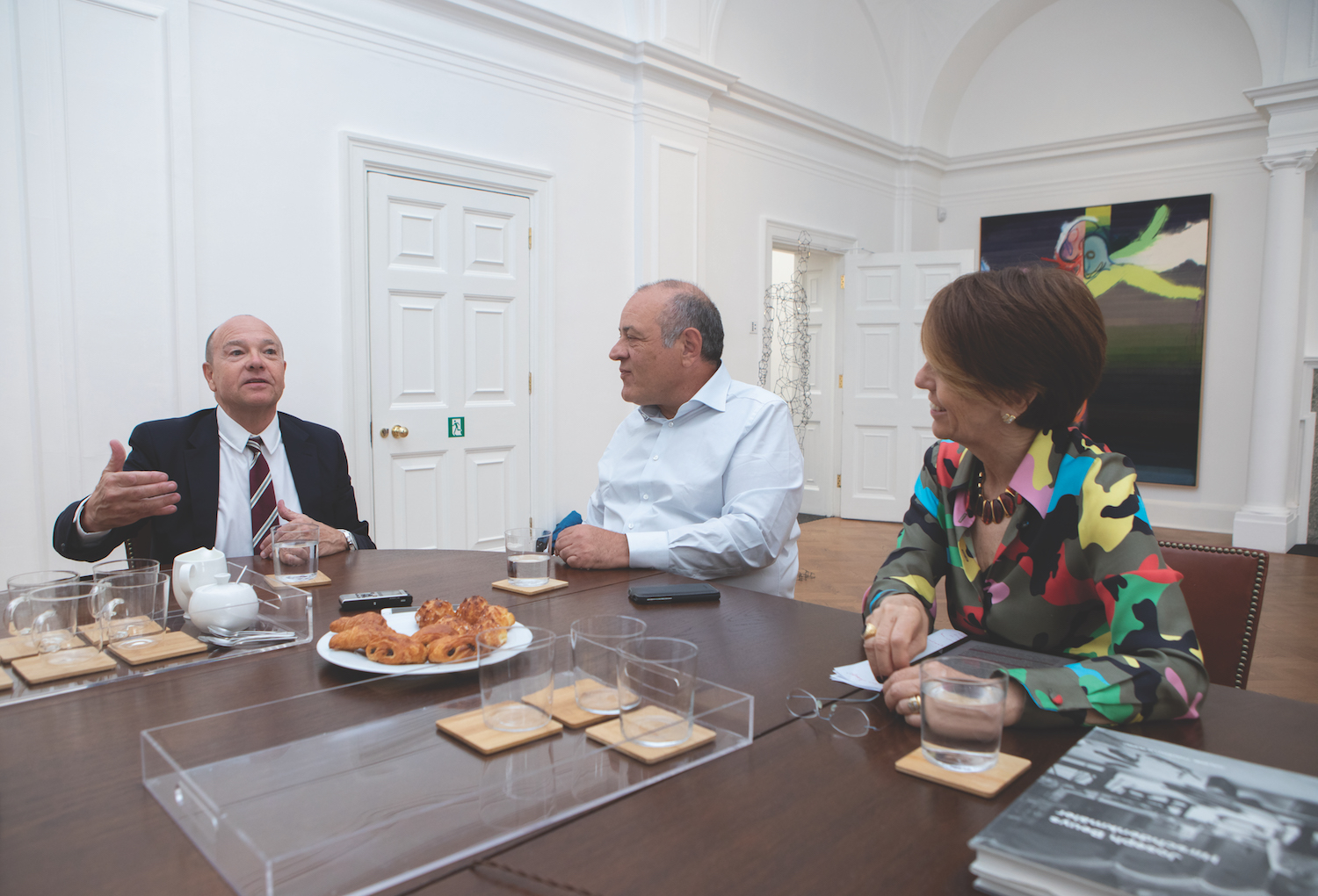Black Star Press
2004 - Painting (Painting)
91,4 x 71,1 cm
Kelley Walker
The triptych Black Star Press is part of the series ‘The Black Star Press project’ initiated in 2004 by the American artist Kelley Walker. The images in this series are taken from a photo essay on the struggle for civil rights in Alabama, directed by Charles Moore in 1962 (and published by the magazine ‘Life’) which showed the repression of the black population and persistent inequalities in the southern United States. The title “Black Star Press” is taken from the name of the news agency where Charles Moore worked, and it refers to the young black man shot fighting for the rights of his community. Of those recovered images, scanned and screen printed, Walker poured dark chocolate, white and milk chocolate in the manner of a dripping. This symbolic gesture breaks down the documentary nature of the image and expresses heightened subjectivity of Abstract Expressionism, which opposes the action a cold mechanical representation of the image. Reactivating the potential opened up by Andy Warhol’s artistic offerings in the series ‘Race Riot’, “Black Star Press” echoes the entire tradition of image appropriation, from Pop Art and Appropriationism itself.
While the pop art movement and the appropriationist movement essentially concerned the iconography of popular media, like newspapers to TV commercials, Kelley Walker is interested in the media system as a whole. His work frequently questions the notions of author and audience, originality and authenticity, reproduction and the circulation of images. The artist plays with the usual distribution system of the work of art. The image contained therein can indeed be reproduced endlessly and printed in various formats according to wishes of the buyer, as exemplified in the work Shema (2003). Demonstrating that there is more ways than one to escape the rehearsal process, Untitled (2003) is a steel plate of the recycling logo superimposed over an image. For Walker, it is no longer necessary to appropriate ideas, objects, images but to recycle them: the perpetual recycling of codes and systems inherent in advertising. But also of history, politics, and art in the United States. Kelley Walker was born in 1969 in Columbus, Georgia. He lives and works in New York.
Colors:
Related works sharing similar palette

© » TWOCOATSOFPAINT
Charles LeDray: Securing memory – Two Coats of Paint Charles LeDray, Shiner, 2015–2023, wood, mat board, acrylic paint, enamel paint, watercolor, polyurethane, fabric, leather, embroidery floss, acrylic yarn, silicone rubber, Lava soap, mother of pearl, Fimo, pretzel bits, rabbit fur, bubble gum, wax, cinnamon oil, shoe dye, metal, copper wire, electrical tape, acrylic, foil, pumice, plastic, eraser, letterpress print, printed paper, 5 3/4 x 34 x 23 7/8 inches Contributed by Barbara A...

© » ARTS EQUATOR
Podcast 45: On Southeast Asian Film with Rithy Panh and Park Sungho | ArtsEquator Thinking and Talking about Arts and Culture in Southeast Asia ArtsEquator Viewpoints August 23, 2018 Duration: 35 mins At SeaShorts 2018 , which took place from 1 – 5 August 2018 in George Town, Penang, we caught up with Cambodian film director, screenwriter and producer Rithy Panh, and Park Sungho, programmer for S-Express Cambodia (a selection of Cambodian short films at SeaShorts), who’s also a programmer for the Cambodia International Film Festival ...

© » ARTS EQUATOR
Book Review: "The State and The Arts in Singapore: Policies and Institutions" | ArtsEquator Thinking and Talking about Arts and Culture in Southeast Asia Articles Images courtesy of Institute of Policy Studies, Singapore April 9, 2019 By Chin Ailin (734 words, four-minute read) Commissioned by the Institute of Policy Studies of Singapore (IPS) to trace the course of cultural policy in Singapore from the 1950s to the present, The State and the Arts in Singapore: Policies and Institutions is a comprehensive tome that should serve as an essential text in time to come for any student’s introduction to Singapore’s arts and cultural policies...

© » KADIST
Gregory Halpern
2016Gregory Halpern spent five years shooting ZZYZX , and another year editing the results, from an estimated thousand rolls of film, about half of which were shot in the final year after his Guggenheim Fellowship enabled him to live in California...

© » KADIST
John Lucas and Claudia Rankine
2018Historically, blondeness has been a signifier for desirability and beauty, speaking to “purity” — the purity of whiteness — like no other bodily attribute except, perhaps, blue eyes...

© » KQED
Black History and Love Intertwine at February Bay Area Concerts | KQED Skip to Nav Skip to Main Skip to Footer upper waypoint Arts & Culture Black History and Love Intertwine at These February Bay Area Concerts Andrew Gilbert Feb 7 Save Article Save Article Failed to save article Please try again Email Mary Stallings performs at Keys Jazz Bistro on Feb...

© » KADIST
Clarissa Tossin
2012In Fordlândia Fieldwork (2012), Tossin documents the remains of Henry Ford’s rubber enterprise Fordlândia, built in 1928 in the Brazilian Amazon to export cultivated rubber for the booming automobile industry...

© » KADIST
Sharon Lockhart
2008Lockhart’s film Lunch Break investigates the present state of American labor, through a close look at the everyday life of the workers at the Bath Iron Works shipyard—a private sector of the U...

© » KADIST
Claudia Joskowicz
2007The primary interest in the trilogy is Joskowicz’s use of cinematic space, with long tracking shots that portray resistance to habitual viewing experiences of film and television...

© » ARTNEWS RETROSPECTIVE
Howardena Pindell on the Exclusion of Black Artists in the 1980s – ARTnews.com Skip to main content By Alex Greenberger Plus Icon Alex Greenberger Senior Editor, ARTnews View All January 14, 2021 1:13pm ©ARTnews Over the past several years, museums and galleries have made concerted efforts to show work by Black artists, responding to growing calls for equity...







.jpg)


